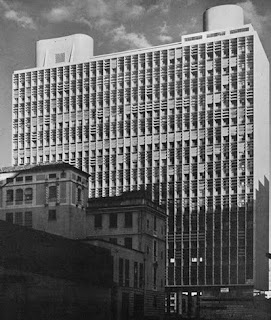Brazil Now – The second cause of the confirmation of the changed status of Brazilian architecture in the world
The second cause is less concrete, perhaps. The first great period of interest in Brazil coincided with its emergence in the world as both an economic power and a democracy. The ‘disappearance’ of Brazil from international discourse coincides, arguably, with the period of military rule, when from 1964 onwards Brazil and Brazilian culture became inward-looking and xenophobic. The revival of Brazil in architectural terms is coincident with the return to democracy, but more than that, its entry into a globalized world of trade and the consolidation of its economy, particularly under Cardoso and Lula. But further, we might say that Brazil once again has started to represent a kind of future. It is big, and growing, and it has interests in areas of strategic, but often overlooked importance in the contemporary world. It is, and has long been, the world’s leading producer of bioethanol, and since the 1970s has run much of its private cars on this fuel. It grows soya in immense quantities, most of which it sells to the Chinese. It has lots of oil, most of it recently discovered. It builds more than 2.9 million cars annually, equal to production in France, and comfortably exceeding that of the UK and Spain. Its aerospace industry is the third largest in the world, and dominates the world market for airliners of up to 100 seats. There are few areas of the contemporary world in which Brazil does not have some strategic interest.















